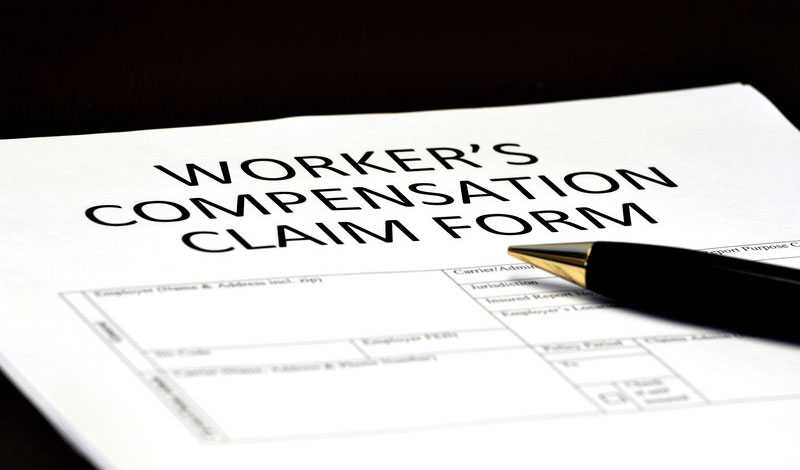Legal restrictions and regulations related to employment are important for both employers and employees. It is estimated that challenges around these regulations and restrictions could be impacted by many factors. As a company providing medical records services for workers’ compensation lawyers, we understand that attorneys may need to comprehend and deal with the questions around reasonable accommodations, vaccine mandates, and remote working concerns that are bound to be raised by the COVID-19 pandemic and employers’ response to it. Employers will have to stay abreast with any new employee policies associated with OSHA guidance and rulings, booster shots, and employee leave-related guidelines.
Major Federal Legislation Workers’ Comp Trends
Let us look at some of the major trends to watch out for.
- Presumption laws: According to Michele Hibbert, senior VP, regulatory compliance management with Mitchell, before the COVID-19 pandemic, workers’ compensation presumption laws were focused on first responders – for instance, PTSD (post-traumatic stress disorder) for firefighters, and almost all specifically excluded infectious diseases. Those laws have been expanded significantly in the wake of the pandemic, and more types of employees were included to provide coverage for the COVID-19 virus. Many of the presumption laws associated with the COVID-19 virus have an expiration date. However, it is expected that these expansions will set a guide for covering all essential workers and more infectious diseases even after the pandemic.
- Remote working and privacy/productivity issues: 2022 is still witnessing remote working and hybrid scheduling. A major concern now is how employers can monitor productivity of their workers without compromising employees’ privacy and confidentiality. When deploying surveillance tools, employers must be extra careful not to breach employees’ privacy boundaries. Moreover, these tools must be legal.
- OSHA and HHS-related regulation: The U.S Supreme Court has published significant rulings about the legality of the COVID-19 vaccine mandates issued by two federal agencies, OSHA (Occupational Safety and Health Administration) and the HHS (U.S. Department of Health and Human Services).
- OSHA, a division of the U.S. Department of Labor, had proposed a rule that imposed a vaccine-or-test mandate for employees in organizations with more than 100 workers. The Court prevented the rule from going into effect, finding that the parties challenging the rule were unlikely to succeed in having it struck down. Litigation over the rule continues. In the light of this ruling, employers may decide to drop plans to require COVID-19 vaccination or administer weekly testing programs. At the same time, other businesses, especially private-sector employers, may retain policies that are in line with OSHA’s mandate. Employers may still have to comply with other COVID-19 vaccination rules at the state, local, and industry level.
- At the same time, the Court allowed a rule that was issued by the HHS to proceed. This was following the Court’s finding that the rule was likely to survive any litigation challenging its validity. This rule mandates COVID-19 vaccination, absent a medical or religious exemption, for all healthcare workers in institutions that receive federal funding for patients enrolled in Medicaid and Medicare.
- Mental health days: These were offered to address the stressful effects of the pandemic on the employees, and the continuing trend of remote working. The questions that arise in this regard are how these days are going to be counted, whether the employers will compensate workers for these days, how many mental health days can be given to employees and for how long, and so on. So, in-house workers’ comp attorneys will have to work with their companies’ HR department to ensure that employee policy handbooks are updated so that any changes to state law in 2022 are included.
- Laws related to paid family leave: Paid family leave provides eligible workers paid time off to care for sick family members, spend time with children, and assist their dear and near ones for care during military deployments. Paid family leave may also be available in certain instances when a worker or their dependent, minor child is in quarantine or isolation due to COVID-19. State and federal legislators expect that the focus on paid family leave is bound to increase.
- Telemedicine: This form of medical care is useful in situations where virtual medical care can help people avoid the risk of in-person visits or adjusted clinical schedules. The new CMS physician fee schedule effective from January 1, 2022 includes some important provisions for telemedicine. It removed geographic boundaries for mental health providers so that they can provide service to patients virtually in more locations, across state boundaries. For other providers, the new fee schedule expands compensability until 2023. Some states, including New York, have reverted to their pre-pandemic telemedicine restrictions for workers’ compensation. However, it is expected that most regulatory bodies will continue expanding access to telemedicine, following CMS’ model.
- Medical Marijuana: Experts do not expect the FDA to approve medical marijuana federally in 2022, and the timeline for approval may be extended to 2023. Changes at the national level could impact the workers’ compensation industry and bring more focus on impairment, insurability, reimbursement, banking and so on.
- Ambulatory surgical centers: With effect from January 1, 2022, the CMS reversed the plan contained in their OPPS Final Rule (2021) to start a three-year phaseout of the 1,700 procedures on their inpatient-only list, starting with around three hundred orthopedic procedures in 2021. It was expected that there could be some change in utilization patterns from inpatient to outpatient/ambulatory surgery center use for some of those listed procedures in those states where Medicare payment policies are followed for workers’ compensation. For the current year 2022, most of these codes (except lumbar spine fusion, ankle reconstruction, shoulder joint reconstruction, and the corresponding anesthesia codes which are to remain deferred to clinical judgment as regards the procedure site) have been placed back on the inpatient-only list. This could impact workers’ compensation costs and utilization patterns.
- Additional provider types: New types of providers such as chiropractic assistants have been approved to bill for workers’ compensation following the provider shortage experienced during the pandemic. Many U.S states have expanded their workers’ comp rules for physician assistants and nurse practitioners. This could involve allowing these providers to bill directly rather than a supervising physician, or giving them permissions to sign documents on their own. This trend could continue and affect precertification, billing, reimbursement and bill review systems.
- Legislation affecting payers: Many states have begun implementing legislation that directly affects payers’ ability to manage medical claims. These include introducing regulations that limit direction of care, add new administrative rules that could increase administrative burden as well as claims processing costs, and restrict provider networks. These regulations could become increasingly prevalent across the country in 2022. It could lead to increase in claims costs, and bigger business costs.
The COVID-19 pandemic continues, and its course is rather unpredictable. Therefore, it is also difficult to foresee the concerns that will be most important for the workers’ compensation industry in 2022. Employers and insurers must closely review all the policy changes and updates pertaining to employment laws and processes in the workplace.




